African-American History in Illinois and Madison County
French Colonization of the Americas
The French colonization of the Americas began in the 16th century.
(Click here for a map of French America in 1688.) They
established colonies on a number of Caribbean islands and in South
America. As they colonized the New World, they established forts and
settlements which became cities such as Quebec and Montreal in
Canada; Detroit, Green Bay, St. Louis, Cape Girardeau, Mobile,
Biloxi, Baton Route, and New Orleans in the United States. France
came to the New World to seek a new route to the Pacific Ocean, and
to export products such as fish, rice, sugar, and furs.
The French were the first to explore the Illinois Country in 1673,
when Jacques Marquette and Louis Joliet descended the Mississippi.
The French controlled the new territory, then known as “Illinois
Country,” first as part of French Canada, and then as part of
Louisiana. In 1699, priests of the Quebec Seminary of Foreign
Missions founded the Holy Family Mission at Cahokia – the first
permanent settlement in Illinois Country.
Introduction of Slavery in Illinois
Country
On September 14, 1712, Sieur Antoine Crozat was given control of the
French colony of La Louisiane (Louisiana) by the French government,
and was authorized at the same time to open a traffic in slaves with
the coast of
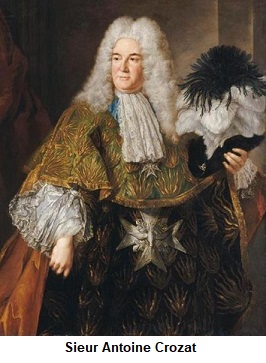
By the middle of the eighteenth century, the French had established
five settlements, including Kaskaskia, Kohokia (Cahokia), Fort
Chartres, St. Philip, and Prairie du Rocher. M. Vivier, the French
missionary to the Illinois Native Americans, described the region in
June 1750:
“We have here whites, negroes, and Indians, to say nothing of
cross-breeds. There are five French villages and three villages of
the natives within a space of twenty-one leagues. In the five French
villages, there are perhaps eleven hundred whites, three hundred
blacks, and some sixty red slaves, or savages. The three Illinois
towns do not contain more than eight hundred souls [natives] all
told.”

After the French and Indian War
(1754-1763)
After the French and Indian War (1754-1763), Great Britain gained
control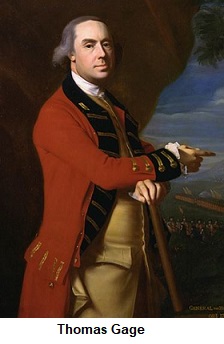
“M. Beauvais, owned 240 arpens [French measurement of land,
equal to about 0.85 acres] of cultivated land and eight slaves; a
captain of militia at St. Philip owned twenty slaves; and M. Balet,
the richest man in Illinois, who resided at St. Genevieve, owned a
hundred slaves, besides hired white people.”
The populations had decreased at the time to about sixteen hundred
inhabitants, of whom six hundred were slaves. By the end of the
century, migration from the East and South had begun, which
considerably increasing the population. The English government laid
no restrictions upon the holding of negroes as slaves by settlers of
this region.
After the American Revolutionary War
From 1775 – 1783, the American Revolution was fought and won. George
Rogers Clark [American
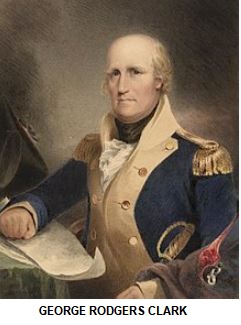
When Virginia ceded her claim on the Northwest Territory, she
stipulated that the French, Canadian, and other inhabitants of
Kaskaskia and neighboring villages should be allowed to retain their
possessions and to enjoy their ancient rights and liberties. These
privileges were granted by Congress in 1787, but a clause
prohibiting slavery in the district “Northwest of the Ohio River”
was inserted in the same document. The residents of Illinois Country
were considerably disturbed by the slave clause. Governor Arthur St.
Clair [of the Northwest Territory] chose to interpret the clause as
intended only to prevent the introduction of slaves, and not as
aiming at the emancipation of those already there. The view of the
governor was universally accepted, and slavery continued.
The Slave Codes
By 1803, it was necessary to provide some legal status for the
numerous indentured blacks, and to regulate relations between
masters and servants. The Governing Council of Indiana proceeded to
draw up a slave code, with the chief material obtained from the
codes of Virginia and Kentucky. These laws were re-enacted by the
Indiana Territorial Assemblies of 1805 and 1807. Under this code:
- All male negroes under the age of fifteen, either owned or acquired, must serve until the age of thirty-five.
- Women served until the age of thirty-two.
- Children born to the slaves during their period of service could also be bound out – the boys for thirty years, and the girls for twenty-eight.
- Slaves brought into the Territory were obliged to serve the full term of their contracts.
- Owners were required to register their servants with the County Clerk within thirty days after entering the Territory. Transfers from one master to another were permitted, provided the slave gave his or her consent. Other provisions included the duties of masters to servants.
- Wholesome food and sufficient clothing and lodging were to be provided each slave. The outfit for a servant was to be: “A coat, waistcoat, a pair of breeches, one pair of shoes, two pair of stockings, a hat, and a blanket.” No provision was made for a future increase of wardrobe, and there was no penalty connected with a failure to provide as instructed.
- On order from the Justice of the County, a servant was whipped for indifference or laziness, however, landowners were left unmolested in the management of their estates, and the question of the treatment of servants was seldom, if ever, raised. Those servants who refused to work or tried to runaway were forced to serve two days extra time for every idle or absent day.
- Anyone harboring a runaway slaves had to pay the master one dollar for each day that he concealed the slave.
- It was forbidden under severe penalty to trade or deal with a servant without the consent of his master.
- Slaves were not allowed to serve in the State militia, to have bail when arrested, to engage in unlawful assembly, or to absent themselves from the plantation of their owner without a special pass or token.
- If any slave refused to serve his master when brought into Illinois, the owner could move to any of the slave States with his property within sixty days. In the counties of Gallatin, St. Clair, Madison, and Randolph, there were over three hundred slaves registered in the decade following 1807. The number increased in the Territory from one hundred and thirty-five in 1800, to seven hundred and forty-nine in 1820.
These Slave Codes effectively barred slaves from gaining their freedom by permitting lengthy terms of “indentured servitude,” which bound workers to a particular person for a period of time in return for food and shelter.
Illinois Territory Created, March 1,
1809
Illinois Territorial Governor Ninian Edwards maintained in 1817 that
the Ordinance of 1787 permitted “voluntary” servitude, meaning the
indenturing
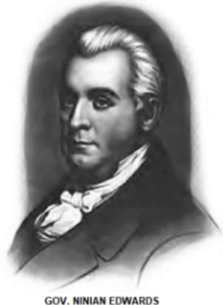 of
Africans for limited periods of service. He advocated reducing the
term to one year. He advanced the belief that such contracts were
“reasonable within themselves, beneficial to the slaves, and not
repugnant to the public interests.” Some citizens believed that
since the French had the right to retain their slaves, the other
settlers of Illinois had the same right. Governor Ninian Edwards
owned slaves: Rose, twenty-three years of age, was registered for
thirty-five years; Antony, forty years old, for fifteen years;
Maria, fifteen years of age, for forty-five years; and Jesse,
twenty-five years of age, for thirty-five years of service. Joseph
was registered at Kaskaskia on June 14, 1810, when he was eighteen
months old, and had just been brought into the Territory with his
mother.
of
Africans for limited periods of service. He advocated reducing the
term to one year. He advanced the belief that such contracts were
“reasonable within themselves, beneficial to the slaves, and not
repugnant to the public interests.” Some citizens believed that
since the French had the right to retain their slaves, the other
settlers of Illinois had the same right. Governor Ninian Edwards
owned slaves: Rose, twenty-three years of age, was registered for
thirty-five years; Antony, forty years old, for fifteen years;
Maria, fifteen years of age, for forty-five years; and Jesse,
twenty-five years of age, for thirty-five years of service. Joseph
was registered at Kaskaskia on June 14, 1810, when he was eighteen
months old, and had just been brought into the Territory with his
mother.
Slave Trafficking
No attempt was made to conceal the traffic in slaves. The St. Louis
Exchange and Land Office, owned by S. R. Wiggins, dealt largely in
slaves, and not only advertised in the Illinois papers, but also had
branch offices at Kaskaskia and Edwardsville. It was easy for the
settlers of Southwestern Illinois to cross the Mississippi River to
St. Charles or St. Louis to purchase slaves. In the first
publication of the “Western Intelligencer,” rewards were offered for
runaway slaves, and the practice of kidnapping had begun. Slaves
whose terms of service were about to expire were seized and carried
off to New Orleans or elsewhere in the South, and sold into a
servitude more wretched than before. Slavery continued in existence
in Southern Illinois as far north as Sangamon County.
Illinois Statehood, December 03, 1818
On December 03, 1818, the State of Illinois was admitted to the
Union, with Kaskaskia being the capital, and Shadrach Bond the first
Governor of Illinois. Some in the new State of Illinois would have
liked to have had Illinois as a slave State, however, many citizens
found it abhorrent to their Christian faith. A Constitutional
Convention was to meet at Kaskaskia in August 1818. As early as
April 1, articles discussing the advisability of making Illinois a
slave State, and vice versa, began to appear in the “Western
Intelligencer.” There were twenty-one delegates against the
introduction of slavery, and twelve in favor of it.
ILLINOIS HISTORY
Source: Alton Telegraph, May 23, 1889
When Illinois was first admitted to Statehood in 1818, the question
of slavery was foremost in the laying of the foundation of our State
government. It was a long and bitter struggle by our forefathers, as
to whether or not Illinois would be a slave State. The question was
debated for eighteen months on the “stump,” at the crossroads, from
the pulpit, in the newspapers (which were few and far between), and
at the family fireside. Finally, a vote of the people was held on
the first Monday in August 1824. The results of the vote is listed
below by counties, as they existed at the time.
Alexander – 75 for; 51 against
Bond – 53 for; 240 against
Clark – 32 for; 113 against
Crawford – 134 for, 262 against
Edgar – 3 for; 234 against
Fayette – 125 for; 121 against
Franklin – 170 for; 113 against
Fulton – 5 for; 60 against
Gallatin – 596 for; 133 against
Greene – 134 for; 405 against
Hamilton – 173 for; 85 against
Jackson – 180 for; 93 against
Jefferson – 99 for; 43 against
Johnson – 74 for; 74 against
Lawrence – 158 for; 261 against
Madison – 351 for; 583 against
Montgomery – 74 for; 90 against
Monroe – 171 for; 196 against
Morgan – 43 for; 455 against
Pike – 23 for; 261 against
Pope – 278 for; 124 against
Randolph – 357 for; 184 against
Sangamon – 155 for; 722 against
St. Clair – 427 for; 543 against
Union – 213 for; 240 against
Washington – 112 for; 173 against
Wayne – 189 for; 111 against
White – 355 for; 326 against
The “Black Laws”
While slavery in the newly formed State of Illinois was outlawed by
the State constitution, a compromise was made. In 1819, the State
legislature passed what was known as the “Black Laws.”
- Limited slavery would be allowed in the salt mines near Shawneetown. These contracts were limited to one year, but were renewable.
- All contracts and indentures made before 1818 were to be enforced, and all slaves had to serve out the full term of years for which they had been bound under the Territorial laws. However, children of indentured servants were to be freed – males at twenty-one years of age, and females at eighteen years of age.
- Current slave owners could retain their slaves.
- If a black resident was unable to present proof of their freedom, they could be fined $50, or sold by the sheriff to the highest bidder.
- The slave owners had to right of sale or transfer of a contract or indenture from one master to another.
- Black people were forbidden to settle or reside in the State without a certificate of freedom.
- It was unlawful to bring slaves into the State for the purpose of emancipating them.
1824 Contest for an Illinois
Constitutional Convention
The question of the admission of Missouri into the Union was debated
in Congress during the winter of 1818 to 1819. Many citizens in
Illinois were outspoken in opposition to the formation of another
slave State on their border. Missourians resented the efforts of
some in Illinois to stop their admittance in the Union, which set in
motion a scheme for the contest for a Convention in Illinois to
re-introduce slavery into Illinois. It was decided to establish a
pro-slavery newspaper at Edwardsville, to set the movement into
operation. This movement failed, however, when Mr. Hooper Warren,
editor of the Edwardsville Spectator and a staunch opponent of
slavery, became aware of their plans. He exposed the whole plot in
an editorial on July 11, 1820, emphasizing the fact that a
determined effort to force a slave constitution upon the people of
Illinois would be made within the next two or three years.
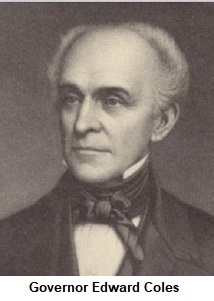
The result of the anti-conventionalists in Illinois was regarded as
an anti-slavery victory. The population in the State increased
rapidly through immigration. However, the courts sustained masters
in their right to hold slaves, and the Legislature showed little
interest to repeal the “Black Laws” of 1819. In 1827 and 1829, laws
were passed forbidding black people to act as witnesses in the
courts against any white person, and prohibited them from suing for
their freedom.
The Slave Hunters
Even though laws were enacted against kidnapping a slave when his
time of servitude was almost up, and sell him in the South, a system
was set up by two or three men, where one would establish himself as
a seller of slaves in St. Louis or at a border town. The other men
would move about the Illinois counties on the lookout for either
free or enslaved black people. When they could get away with it, the
“slave hunters” seized their victims or enticed them to accompany
them under false promises, placed them in wagons, and drove as
quickly as possible to the borders of the State. They usually got
away, but occasionally were overtaken and compelled to release their
captives. Another method of capture was to take the black man to a
spot on the Mississippi or Ohio River, where they were smuggled on
board ships and forwarded to Memphis or New Orleans, where they were
sold into slavery.
The Birth of the Underground Railroad
Those citizens in the State who were anti-slavery were happy to see
a poor slave escape safely from bondage, and were quite willing to
assist him when necessary. Out of this struggle between the slave
hunters and the anti-slavery citizens grew the Underground Railroad,
which aided those trying to escape to the North in safety. So bitter
was the animosity felt by the pro-
The Effect of the Murder of Rev. Elijah
P. Lovejoy
Following the death of Rev. Elijah P. Lovejoy in November 1837 at the hands of a pro-slavery mob, the hearts and efforts
of anti-slavery men were either frightened or forced into silence.
For a time, they proceeded with great caution. Following his death,
Lovejoy’s newspaper, The Observer, continued for a short time in
Cincinnati, Ohio, with Elisha W. Chester as editor. A lack of funds
caused its suspension in April 1838. However, a leading feature of
the anti-slavery movement in Illinois was the prominence of
clergymen who took up the mantle. Foremost among them were Owen
Lovejoy (Rev. Elijah Lovejoy’s brother), John Cross, W. T. Allen,
Chauncey Cook, James H. Dickey, Rev. Thaddeus B. Hurlbut, and Rev.
Hubbell Loomis.
The Anti-Slavery Convention in Upper
Alton, Illinois – 1837
In the Fall of 1837, a convention “favorable to immediate
emancipation of slaves” was called to meet at the Presbyterian
Church in Upper Alton, at the northwest corner of College Avenue and
Clawson Street. There were nearly 260 brave men from different parts
of Illinois who attended. Twenty-three of these were from Alton, and
Major Charles W. Hunter (Alton developer and business man) was first
on the list. Their proceedings were broken up the first day by a
pro-slavery mob. A trustee from the church sent a note, requesting
them not to reassemble there, in fear that the church would be
destroyed. The next day, the convention met in the home of Rev.
Thaddeus B. Hurlbut in Upper Alton (this rock home still stands
today, at the southeast corner of College Avenue and Clawson
Street). The mob from the previous day went there, armed with bowie
knives, sword canes, and pistols. Illinois State’s Attorney Usher Ferguson
Linder (1809-1876) led the mob, which filled the yard, pounding on the door and
pressing their faces against the windowpanes. Rev. Hurlbut told them
they couldn’t come in, unless they broke in. Linder replied, “We
will break your damned head.” “Very well, said Rev. Hurlbut, “you
can do so if you choose, but you cannot come in.” The mob continued
threatening, while those within continued their business. The mob
decided to meet at a nearby schoolhouse to debate what their next
action would be. Someone (not identified) spoke out from the crowd,
saying “There are sixty armed men in the house!” This seemed to
dampen their enthusiasm. The next day the owner of the house
requested Rev. Hurlbut to meet elsewhere, so he fitted up a log
cabin that stood on his own property, and the convention continued
to meet there.
Colonel Charles W. Hunter and the
Liberty Party
Colonel Charles W. Hunter (he was often referred to as Major) was a
prominent Alton land owner and business man. He was a firm
anti-slavery man, and was a conductor on the Underground Railroad,
and attended the Anti-Slavery Convention of 1837 in Upper Alton. In
1844, Colonel Hunter was nominated as the Liberty Party’s candidate
for Governor of Illinois. The Liberty Party was firmly anti-slavery,
and its members were drawn from the Whig ranks. Unfortunately, Hunter lost the
nomination, and the Democrat won the governorship of Illinois.
In the Courts
In 1843, a case was brought before Judge Shields and jury. In Jarrot
vs. Jarrot, a French slave named Joseph Jarrot, alias Peter, who
claimed to be free, and sued his mistress, Julia Jarrot of Cahokia,
for pay for his past services. Joseph’s mother, Pelagie, was
purchased at four years of age, together with her mother, Angelique,
by Nicholas Jarrot of Cahokia, from one Le Brun, in 1798. Angelique,
the grandmother of Joseph, had been owned and held as a slave by the
father-in-law of Le Brunn, one Joseph Trotier, before the United
States took possession of the Illinois Country. Joseph Jarrot, who
was a descendant of a typical French slave, was bequeathed in the
will of Nicholas Jarrot, dated February 6, 1818, to Julia Jarrot,
the appellee. The case was first tried in the Circuit Court of St.
Clair County, when it was decided that a slave could not sue his
master for wages. The Supreme Court, however, reversed this in 1844,
declaring that “a colored person may maintain an action of assumpsit
for services rendered, and in such action his right to freedom may
be tried.” The Supreme Court decided that “the
descendants of the slaves of the old French settlers, born since the
Ordinance of 1787, and before or since the adoption of the
Constitution of Illinois, cannot be held in slavery in this State.
The effect of this decision was fortunate for the slave. It gave him
the right to sue for his freedom in the courts, and rendered the
holding of any negro indentured servants within the State illegal.
In 1854, the Illinois Legislature wiped out from Statute books the
infamous “Black Laws.” They had been legally in force in the State
for forty-six years. Following the Illinois Supreme Court decisions
of 1843 and 1845, there were three classes of negroes: indentured
servants (those serving out a limited period of time); French slaves
(a few negroes bound to perpetual servitude); and the free black
people. Although the poor black citizens were free, Illinois
residence was not without its drawbacks. Public office was closed to
them, as well as (for the most part) schools and colleges. There
were few trades or lines of employment that were easy to secure work
in. Intermarriage between the black people and white people was
forbidden under severe penalty. When in 1825 the Illinois
Legislature decreed that a common school should be established in
each county, it was open to every class of white citizens between
the ages of five and twenty-one. From that time until 1872, the
public schools were for white children only. There were exceptions,
however. The public schools in Alton accepted every child of
suitable age to school. However, in 1897, Alton officials erected
and opened two schools specifically for black students, which was
taught by black teachers.
State Convention of Colored Citizens of
Illinois
To Repeal the “Black Laws” of Illinois
Held in Alton, November 13 – 15, 1856
A convention of African-American men of the State of Illinois,
called for by the Central Committee in Chicago, was held in the
“Colored Baptist Church” of Alton, November 13 – 15, 1856, to
exercise their Constitutional right that was guaranteed to all
people, to peaceably assemble and to petition the government for a
redress of grievances. There were laws in the State they considered
disgraceful, and should be erased and blotted out from history’s
memory. The laws referred to were:
1. Taxation without the right to vote.
2. Denied the right to testify against a white man before a court of
justice.
3. Taxed for school, without the privilege of sending their children
to public schools.
Members of the convention of Madison County were: C. C. Richardson,
J. Kelley, Louis Overton, E. White, E. Wilkerson, H. Douglass King,
Rev. R. J. Robinson, and J. H. Johnson.
It was determined at the convention to form the “Illinois State
Repeal Association,” with appointed officers for a president,
vice-president, treasurer, secretary, corresponding secretary, and
an executive committee of nine. The object of the association was to
obtain all the rights and immunities of citizenship. Anyone could
become a member by paying an initiation fee of twenty-five cents.
Meetings were to be held on the second Thursday of each month. All
meetings were opened with prayer, and previous minutes read. The
following officers were elected: President – John Jones of Cook
County; Vice-President – Dr. M. Cary of Cook County; Secretary – B.
L. Ford of Cook County; Corresponding Secretary – John A. Crisup of
Cook County; Treasurer – William Jackson; and Executive Committee –
R. H. Rollins, Chicago, H. D. King, Alton; Thomas Mason, Peoria;
Louis Isbel, Chicago; Henry Bradford, Chicago; J. H. Barquet,
Chicago; William Johnson, Chicago; William Barton, Macoupin; and B.
Henderson, Jacksonville.
On the evening of November 15, A very large assemblage of both
colored and whites convened at Liberty Hall in Alton, to hear
speeches. Mr. Jones stated, “I am no public speaker; I am unsuited
to the platform. I am unsuited to the platform. If there is a place
for so humble an individual as myself in this anti-slavery movement,
it is the executive department. But I have had no choice in the
present arrangement; if so, I had not been here tonight; at least in
this position. The scene before me calls up old and familiar
reminiscences. I am no stranger here in Alton. I love it, because it
was here I first breathed free air and stood up a man, beyond the
reach of the inhuman code of slavery.”
Mr. William Johnson addressed the audience, then Mr. H. Ford
Douglass was introduced. He gave a lengthy, eloquent speech, part of
which is: “Judge Kane decided that a slaveholder had the same right
to carry his slave with him into a Free State, that he had to take
his carpetbag. The doctrine that Slavery goes wherever the
Constitution goes is now openly maintained by Toombs and others in
the South, and dough-faces innumerable in the North. This is the
only consistent course for the man who admits the constitutional
right of the slaveholder to make merchandise of men. If it permit
slavery to exist in Missouri – the right of one man to enslave
another; if it sanctions that infernal doctrine that had its birth
amidst the darkest conceptions of atheism – that one man can own the
blood, bones, and muscles of his fellow-man; traffic in the
blood-bought image of Christ; shut out from their immortal souls the
light of God’s glorious sun, then indeed is it a national
institution, having rights in common with any other institution in
the country, that the Constitution recognizes, to go wherever it
goes. But sir, I do not assent to the doctrine. This is not a great
slave empire – a barbarian people – third-rate civilization. To
borrow the undying inspirations of another, like the Roman who
looked back upon the glory of his ancestors, in great woe
exclaiming, ‘Great Scipio’s ghost complains that we are slow, And
Pompey’s shade walks unrevenged among us.’ ….. Let us profit from
the teachings of history, until each one of us shall fully realize
the truth of which Lord Bacon taught that ‘Knowledge is Power.’”
The State Repeal Association was formed with the following preamble:
“Whereas, We the people of color of the State of Illinois, are
cursed by the blighting influence of oppression, as displayed in the
inequality of its laws, in depriving us of the rights of oath and
franchise. And whereas, we believe these laws to be morally wrong
and impolitic. Therefore, we deem it our duty to organize
associations to employ all lawful and honorable means for the repeal
of the Black Laws of the State, and for the final accession of our
political rights.”
*******
The proceedings of the 1856 State Convention of Colored Citizens.
The Emancipation Proclamation of 1863
The campaign of 1856 in Illinois proved to be the welding of all the
anti-slavery elements firmly into one organization, which in time
became the State Republican Party. Men with undoubted anti-slavery
principles, such as
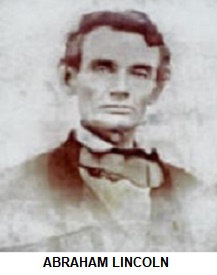 Abraham
Lincoln, were chosen as its leaders. During the Civil War, on
September 22, 1862, President Abraham Lincoln issued a preliminary
Emancipation Proclamation,
freeing more than three million slaves in the Confederate States, as
of January 1, 1863. The bold move recast the Civil War as a struggle
against slavery. Lincoln stated, “I never in my life felt more
certain that I was doing right than I do in signing this paper.” The
proclamation applied only to the States that had seceded from the
Union, leaving the slavery of 500,000 African-Americans in the loyal border States unaffected. It also exempted those
parts of the Confederacy under Northern control.
Abraham
Lincoln, were chosen as its leaders. During the Civil War, on
September 22, 1862, President Abraham Lincoln issued a preliminary
Emancipation Proclamation,
freeing more than three million slaves in the Confederate States, as
of January 1, 1863. The bold move recast the Civil War as a struggle
against slavery. Lincoln stated, “I never in my life felt more
certain that I was doing right than I do in signing this paper.” The
proclamation applied only to the States that had seceded from the
Union, leaving the slavery of 500,000 African-Americans in the loyal border States unaffected. It also exempted those
parts of the Confederacy under Northern control.
The Emancipation Proclamation provided for the recruitment of
African-American
military units among Union troops. Tens of thousands of ex-slaves
volunteered for the armed forces. About 180,000 African-Americans
served in the U.S. Army, and 18,000 more in the U.S. Navy during the
Civil War. Lincoln’s Gettysburg Address, delivered in November 1863,
referred to the proclamation and abolition of slavery as a goal of
the war with the words “a new birth of freedom.”
It was the
Thirteenth Amendment, passed in 1864, that outlawed
slavery throughout the United States. However, it did not confer
rights of citizenship. Full citizenship was granted to all African
Americans in 1868 with the ratification of the Fourteenth Amendment
to the Constitution, but it would be almost another 100 years before
African Americans were accorded full protection under the law, and
discrimination outlawed.
Modern Civil Rights for
African-Americans
The Civil Rights Act of 1964, requested by President John Kennedy
and pushed on by President Johnson, prohibited discrimination on the
basis of race, color, religion, sex, or national origin, and was the
nation’s benchmark civil rights legislation. Civil rights leader,
Martin Luther King Jr., stated that the Civil Rights Act was nothing
less than a “second emancipation.” The act was later expanded to
bring disabled Americans, the elderly, and collegiate athletics
under its umbrella. It also paved the way for two major follow-up
laws: the
Voting Rights Act of 1965, which prohibited literacy tests
and other discriminatory voting practices, and the
Fair Housing Act
of 1968, which banned discrimination in the sale, rental, and
financing of property.
********
Recommended Reading:
“Eyewitness Account: The Kidnapping of Africans for Slaves”, by Dr.
Alexander Falconbridge, 1788
*********
Sources: